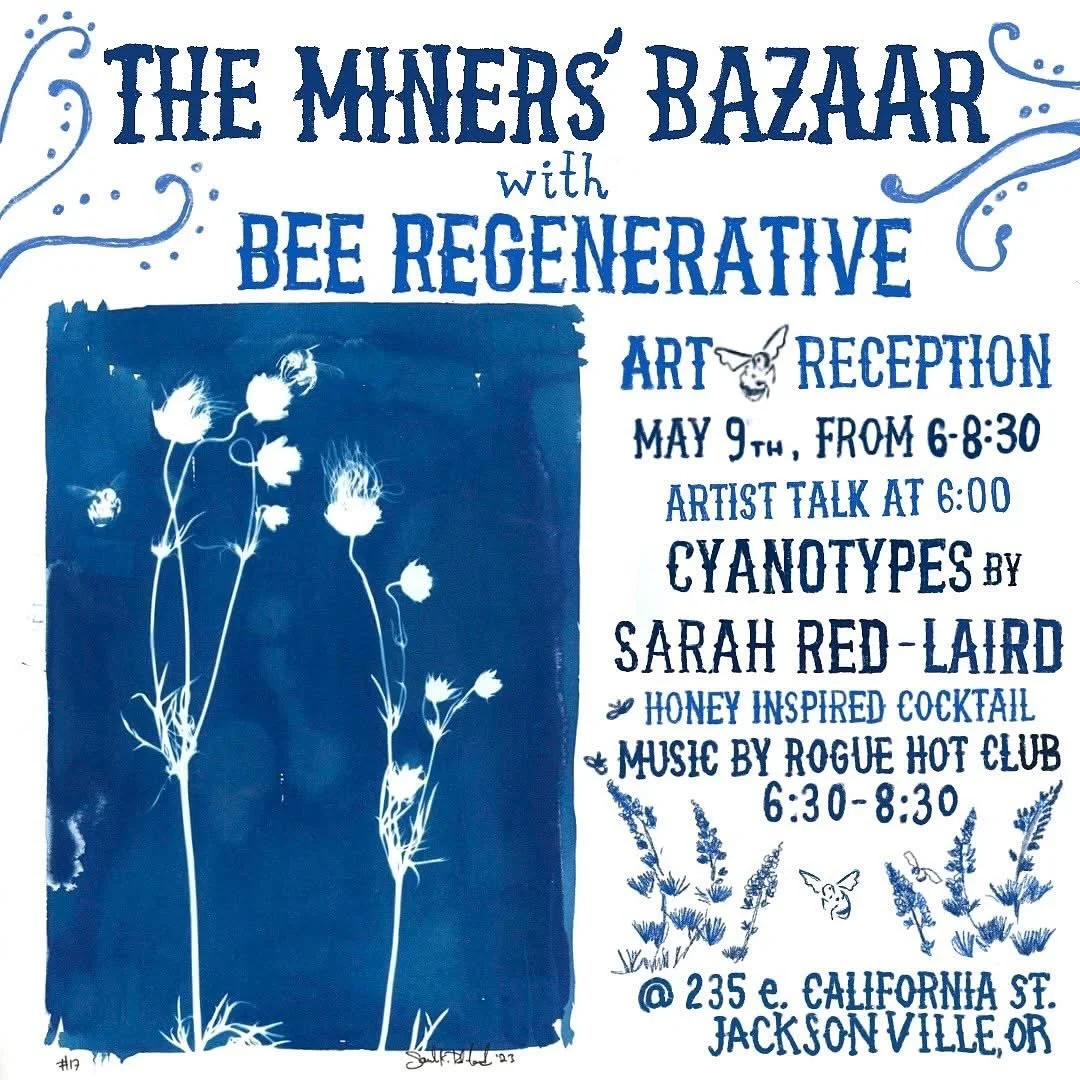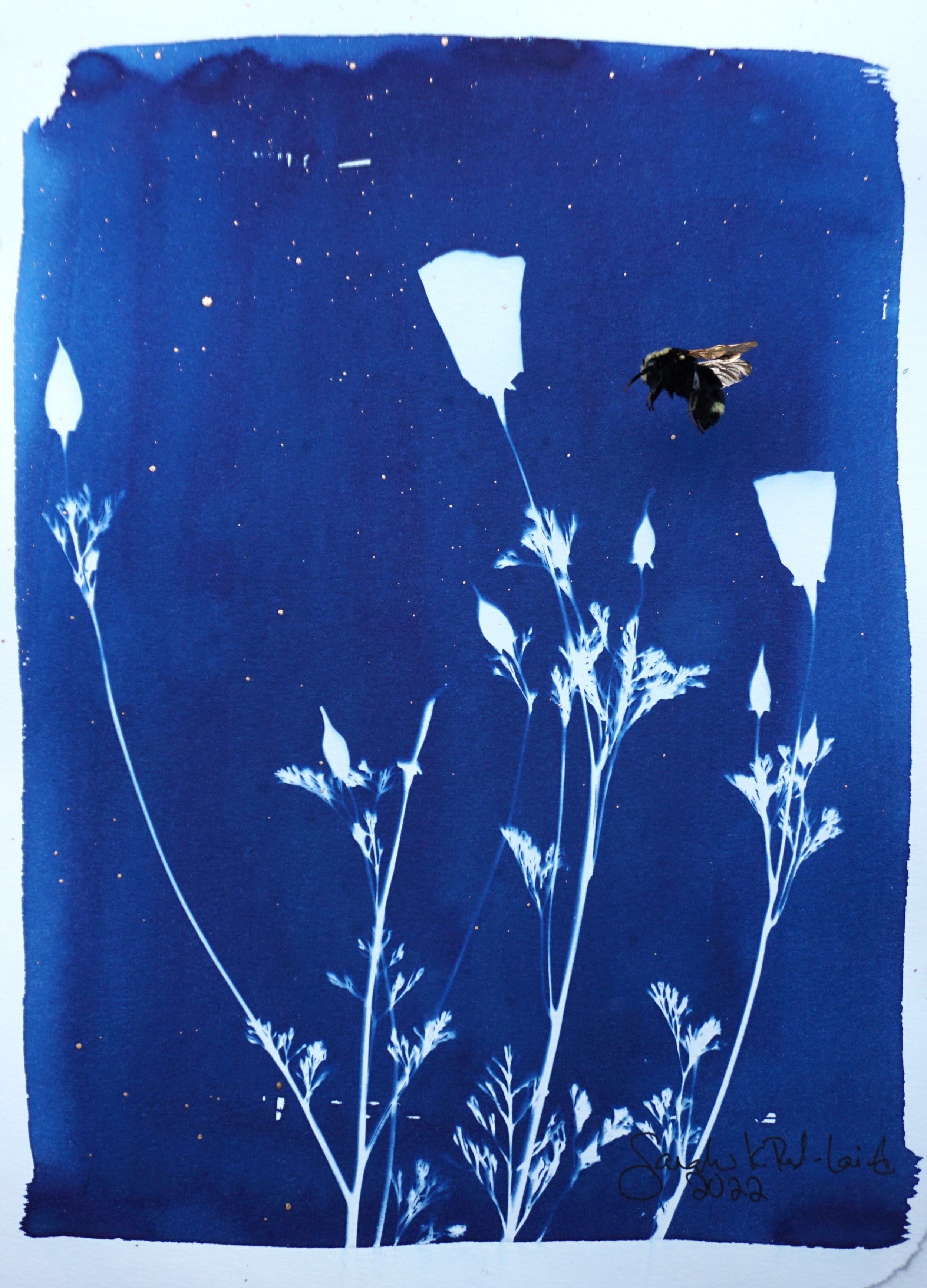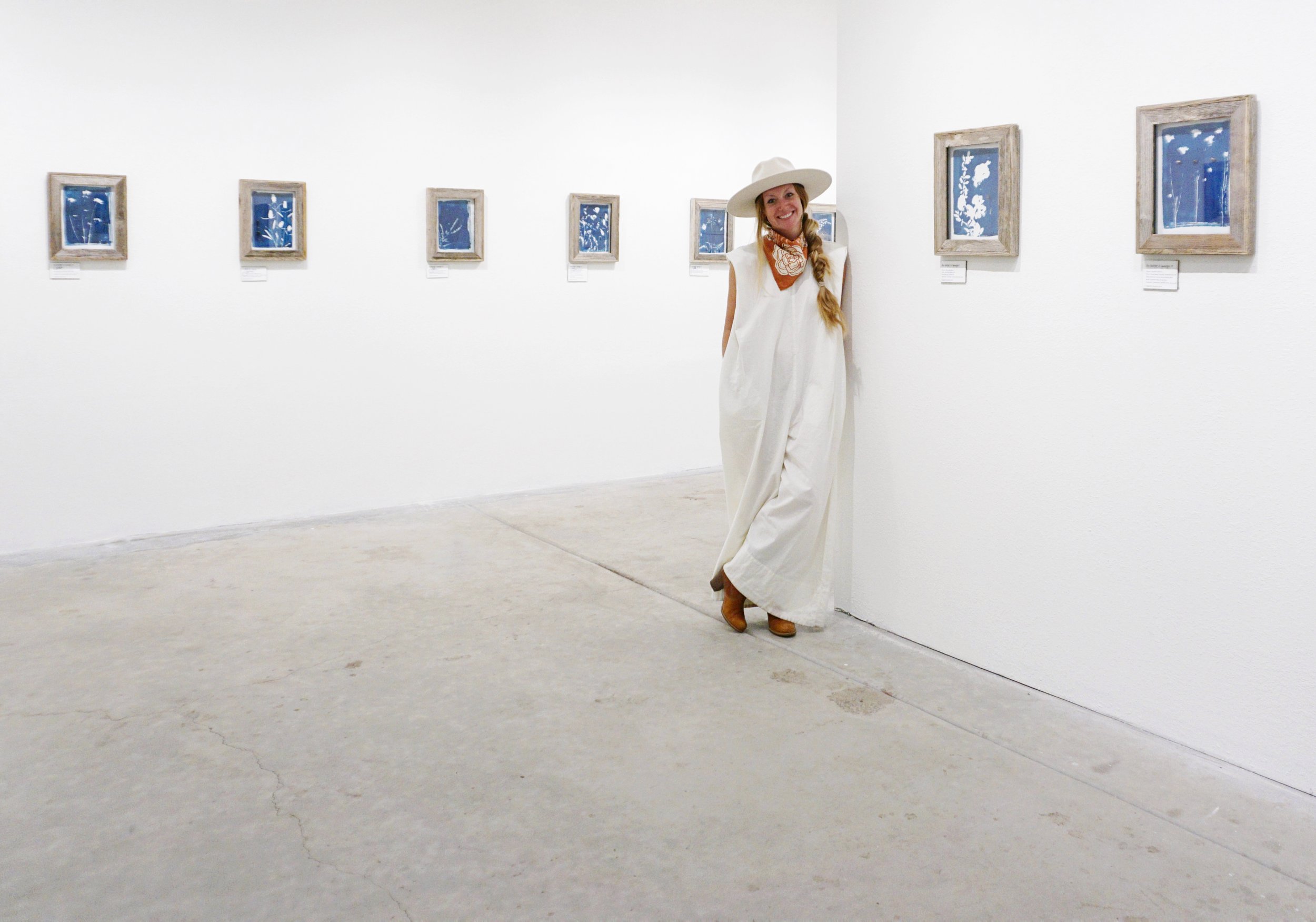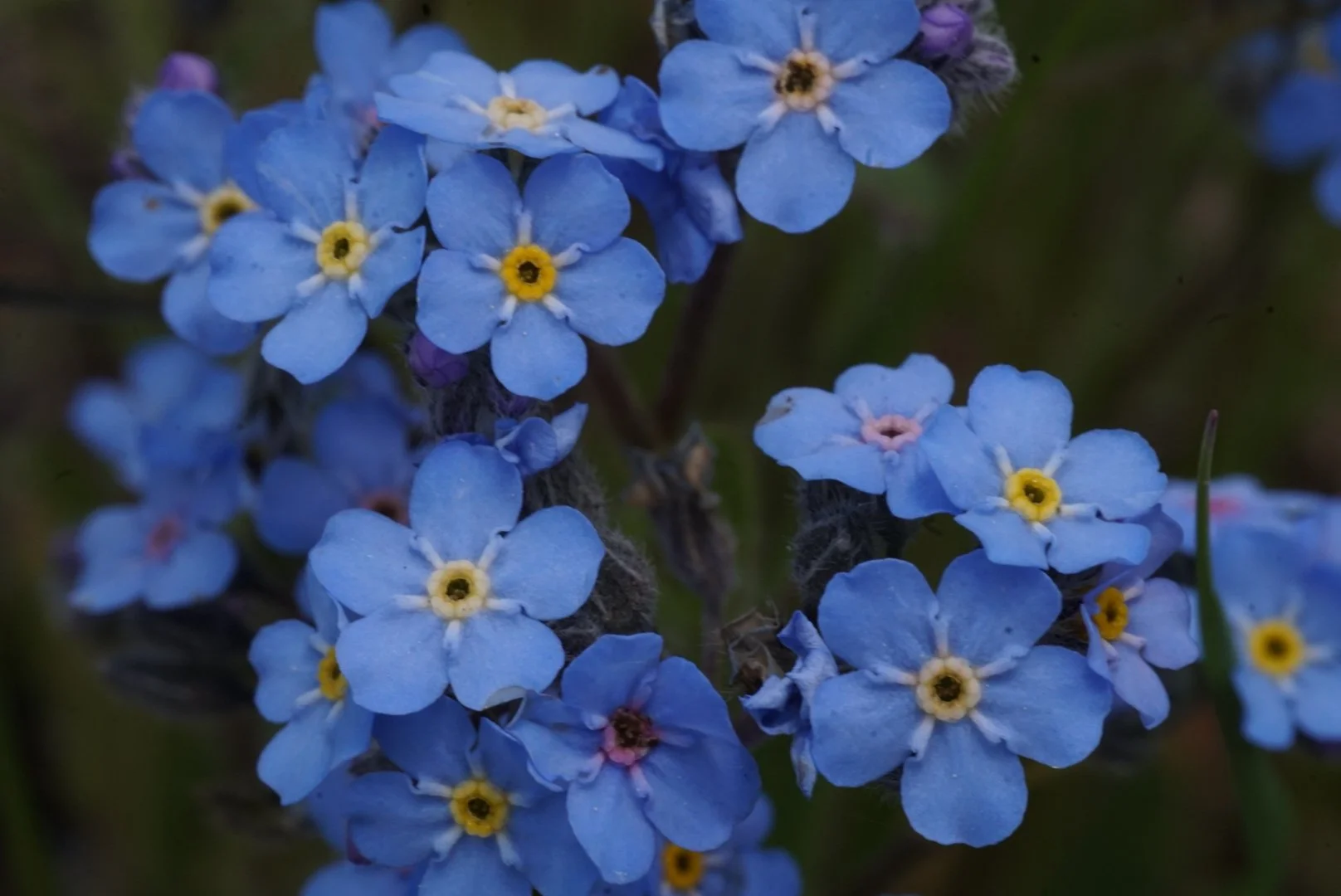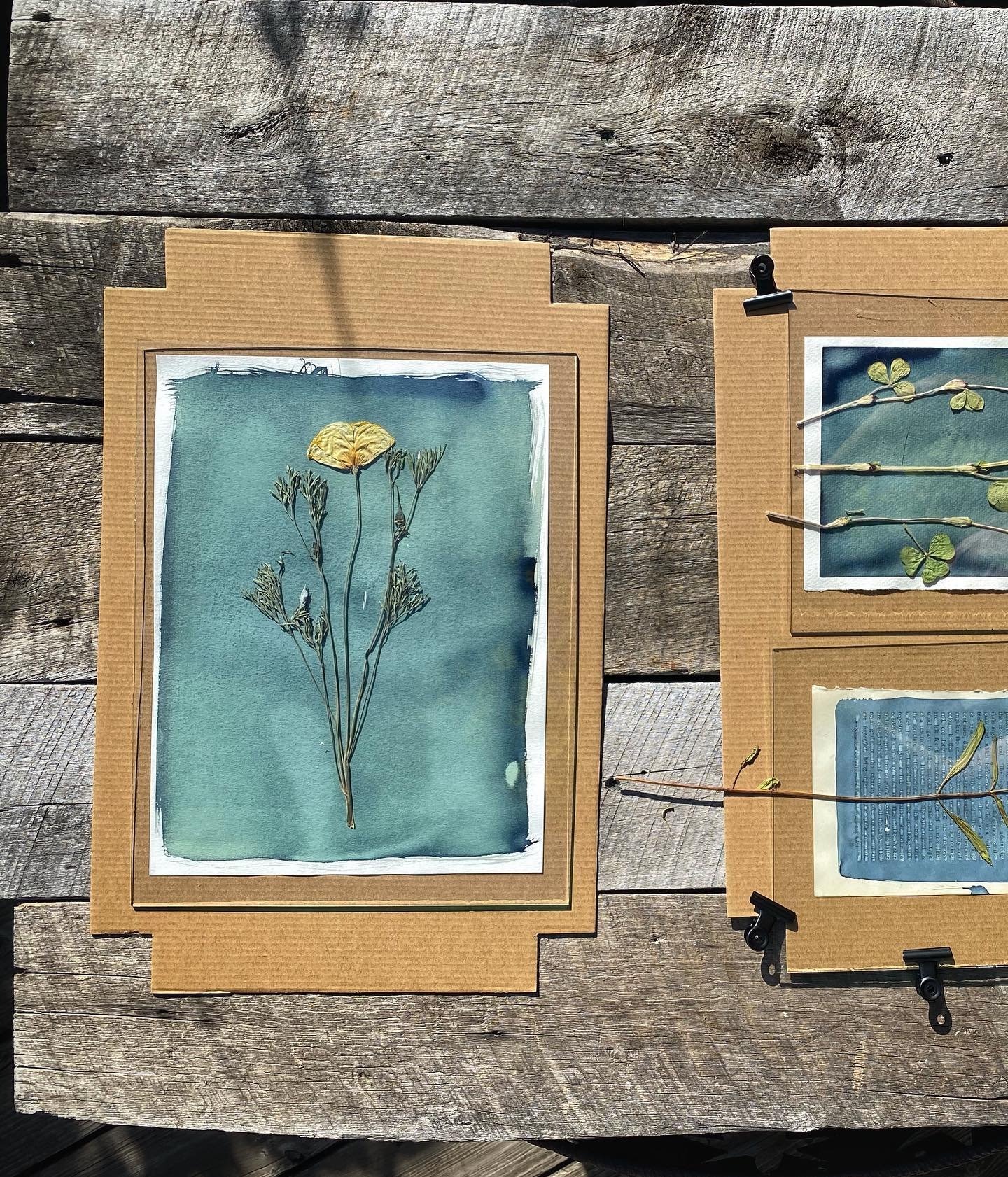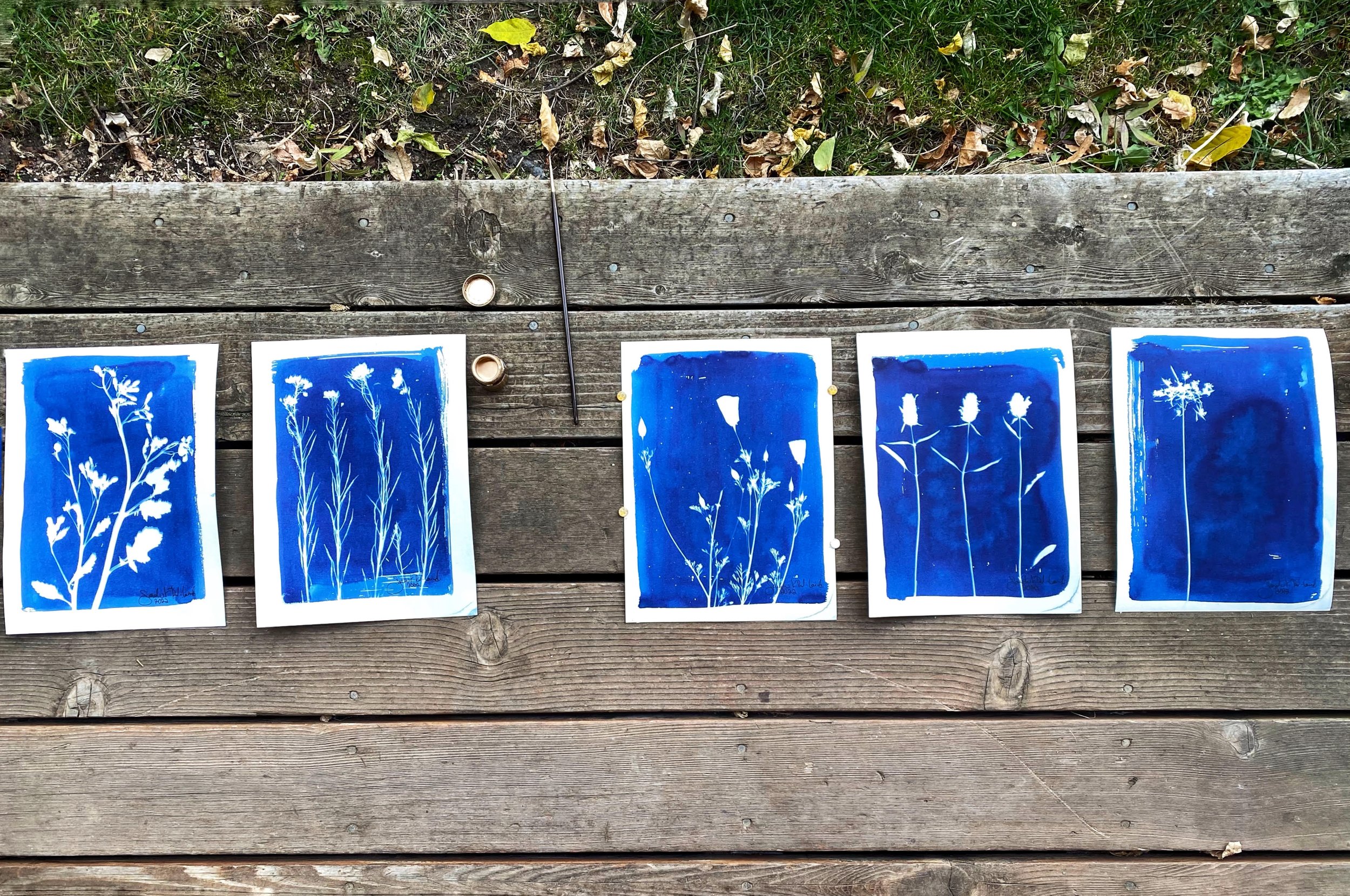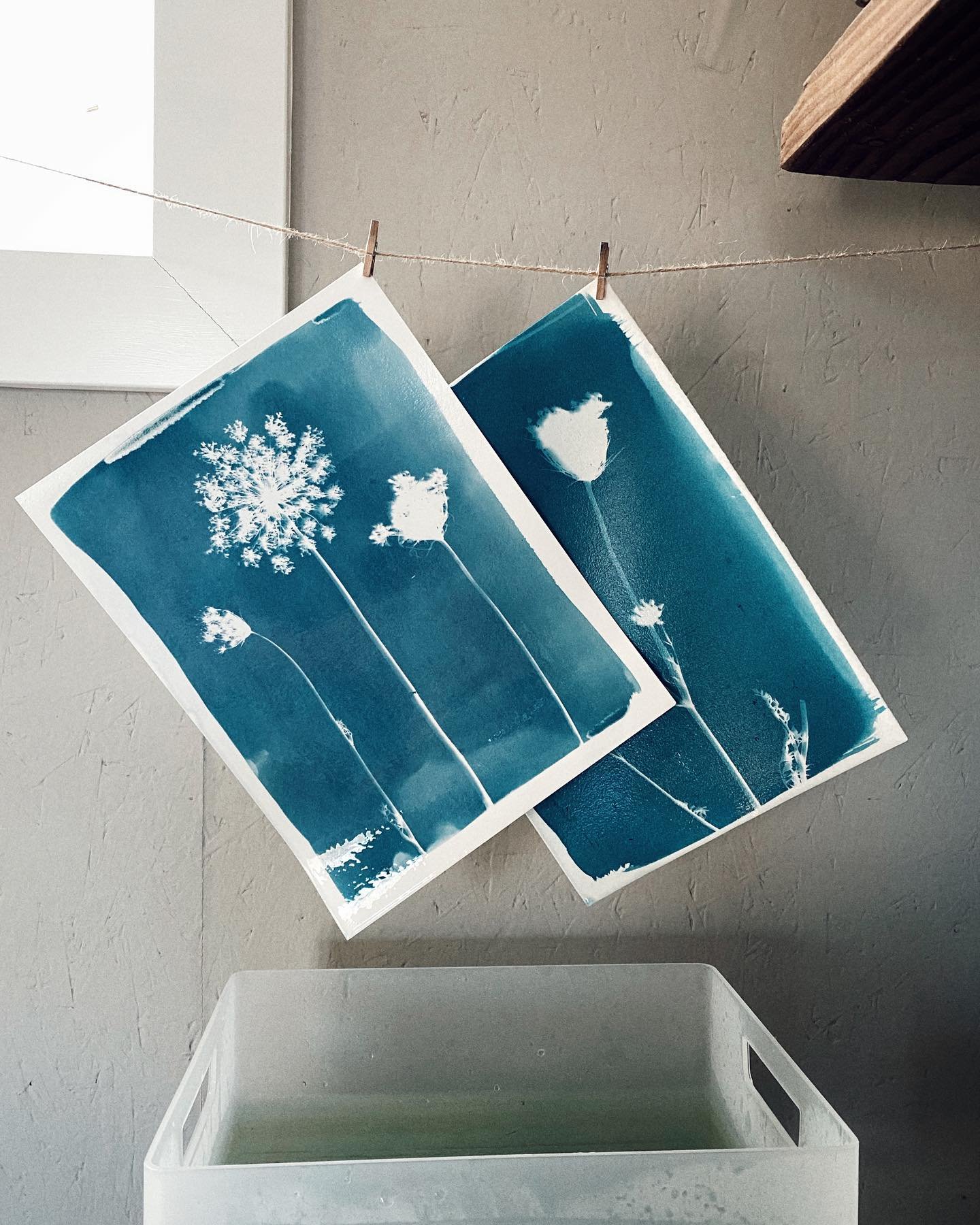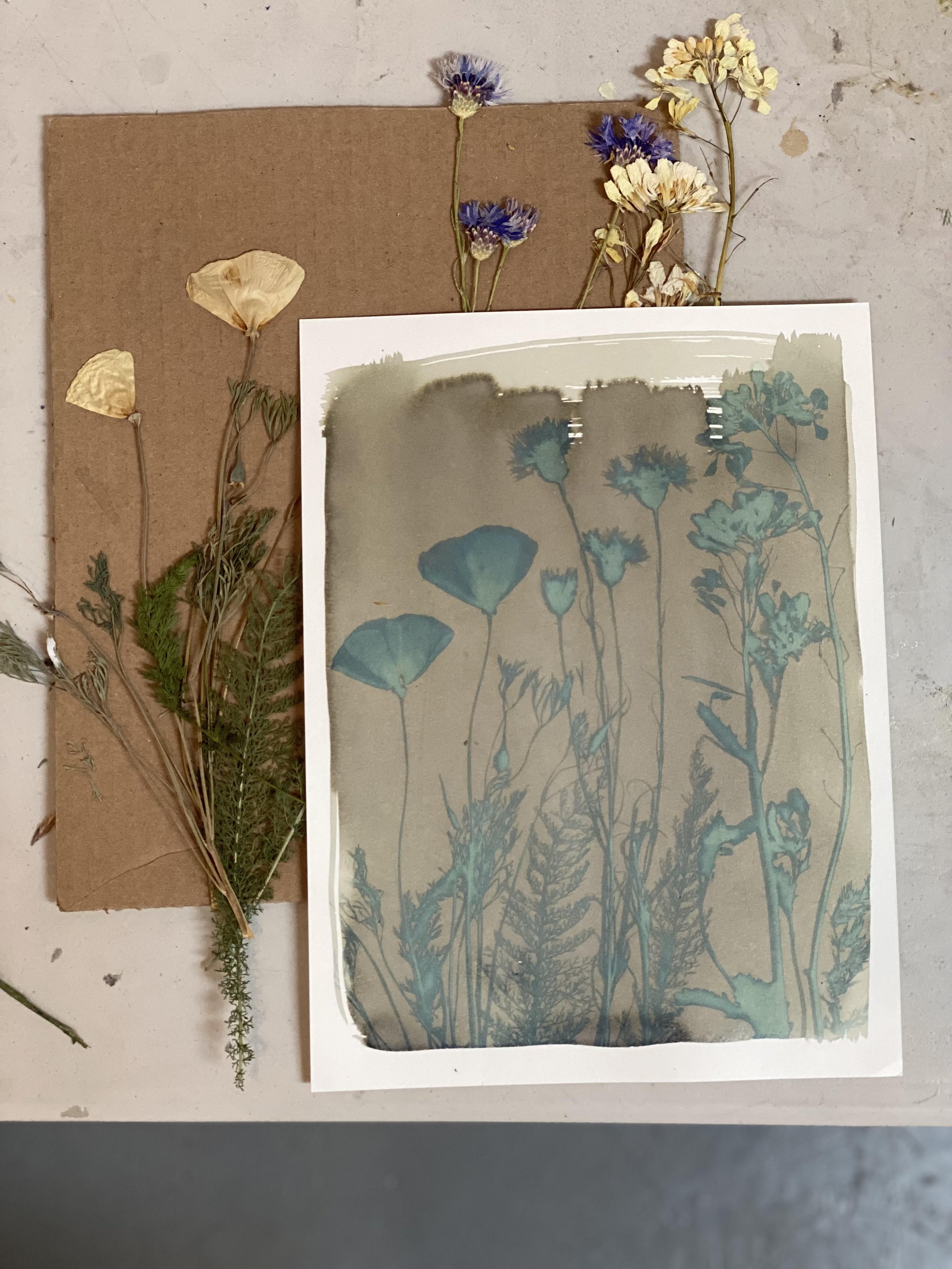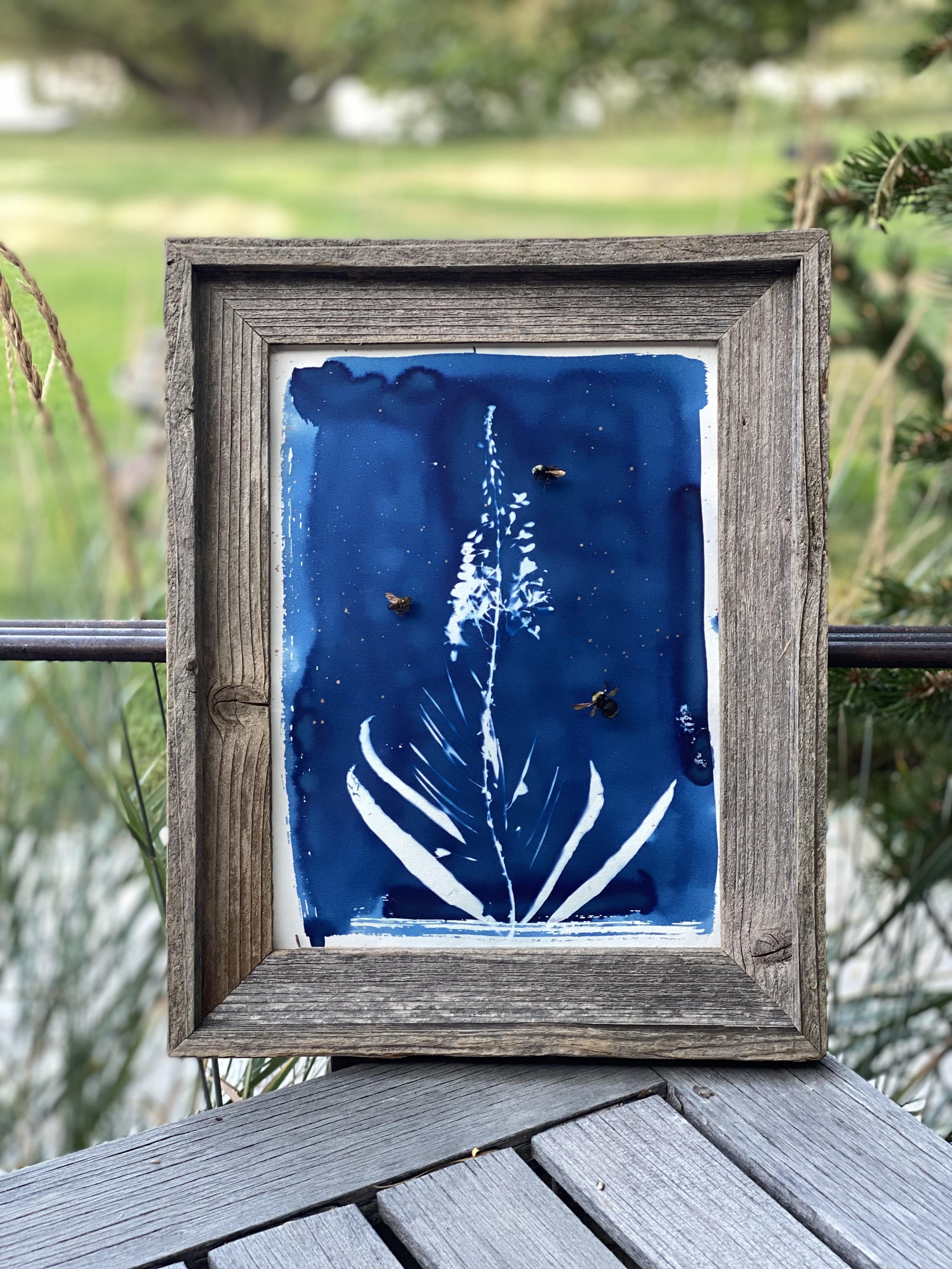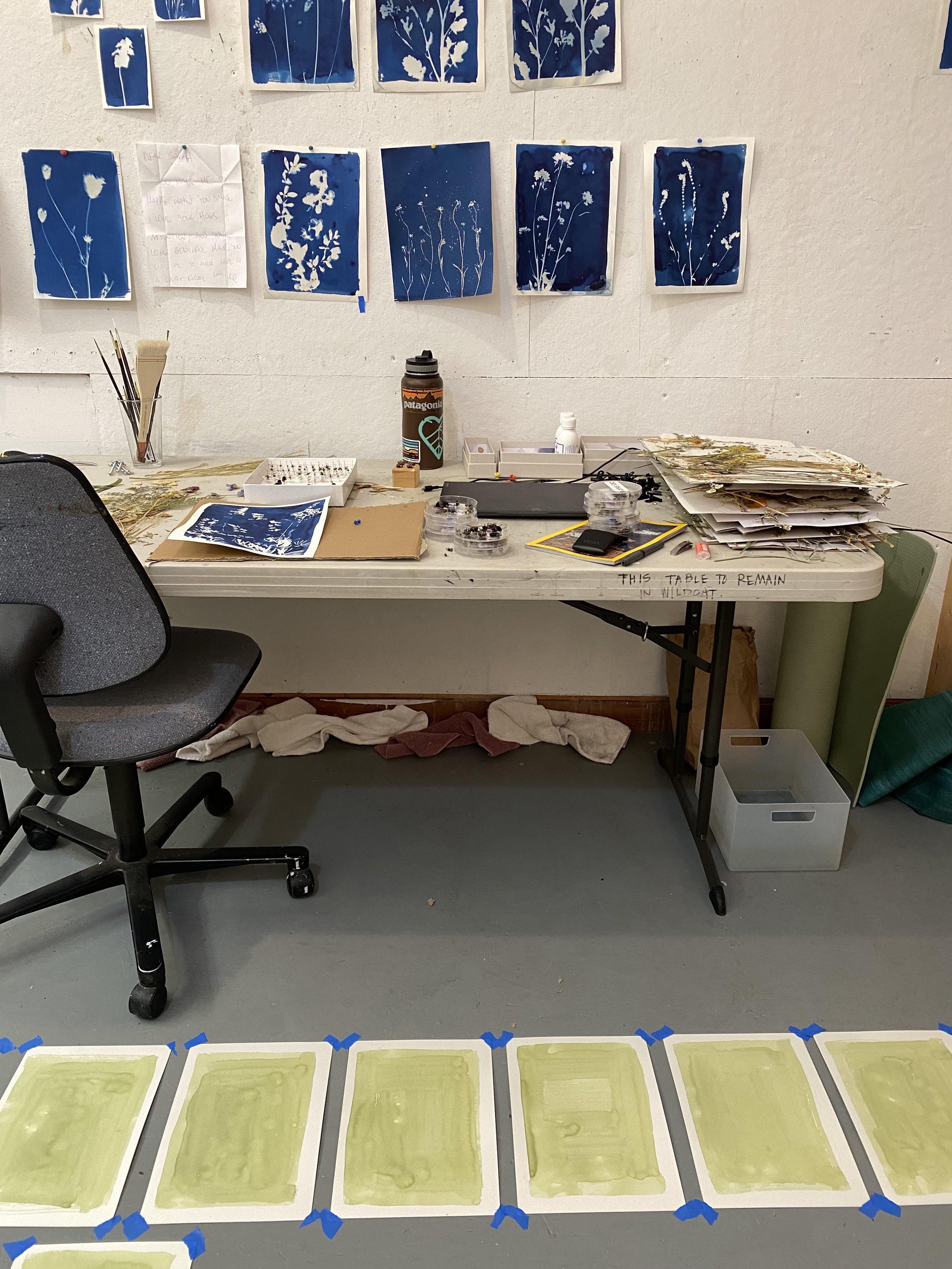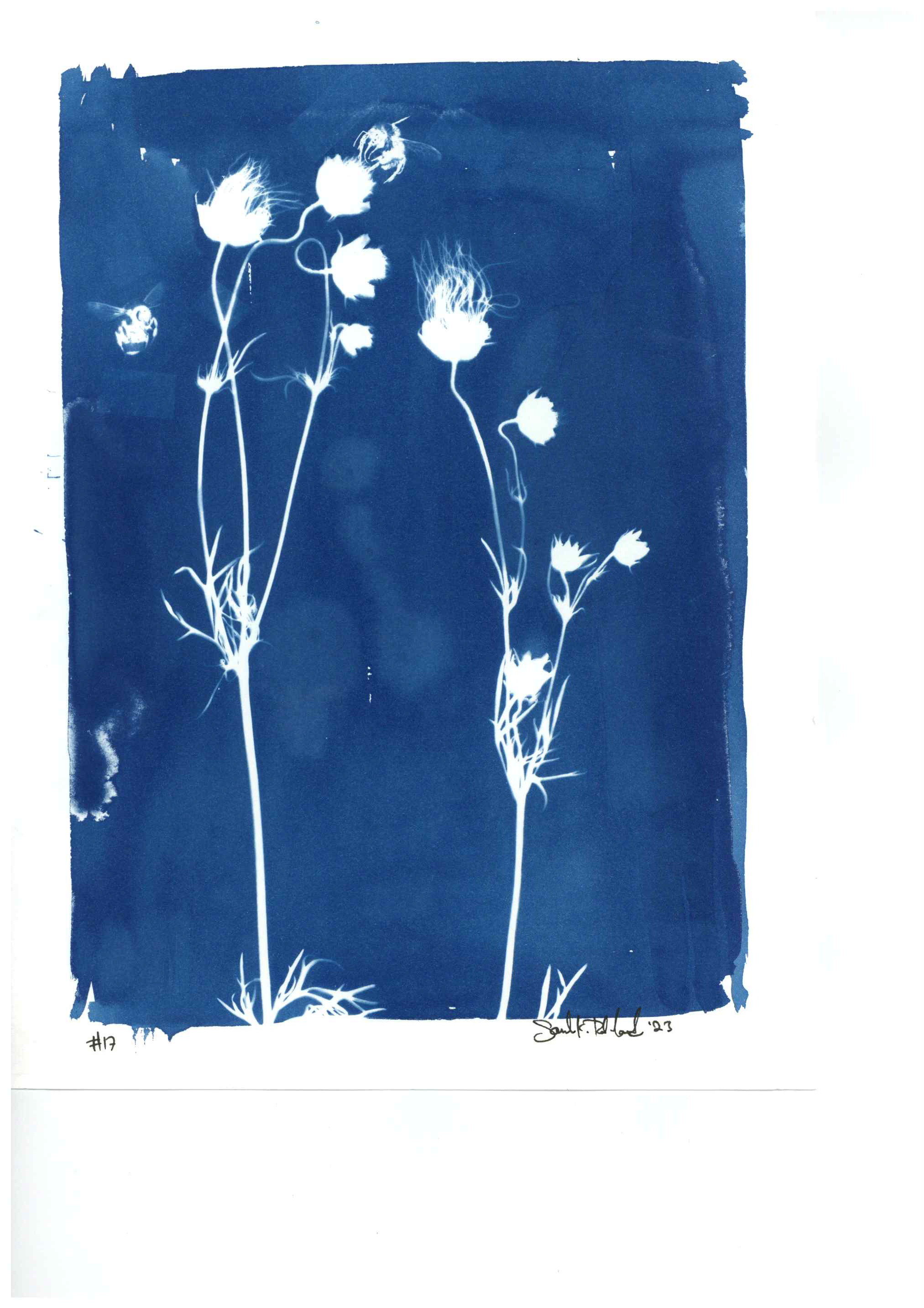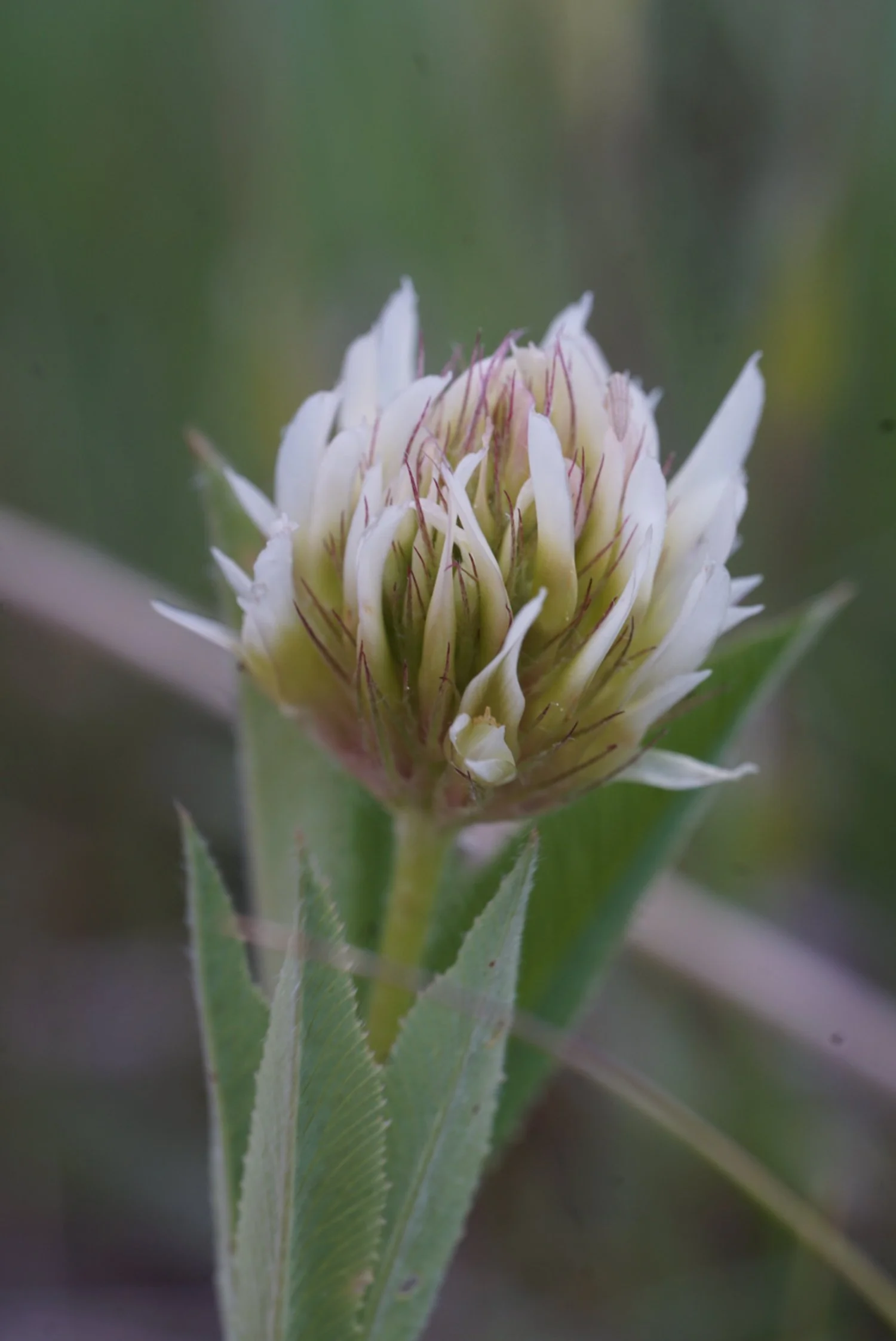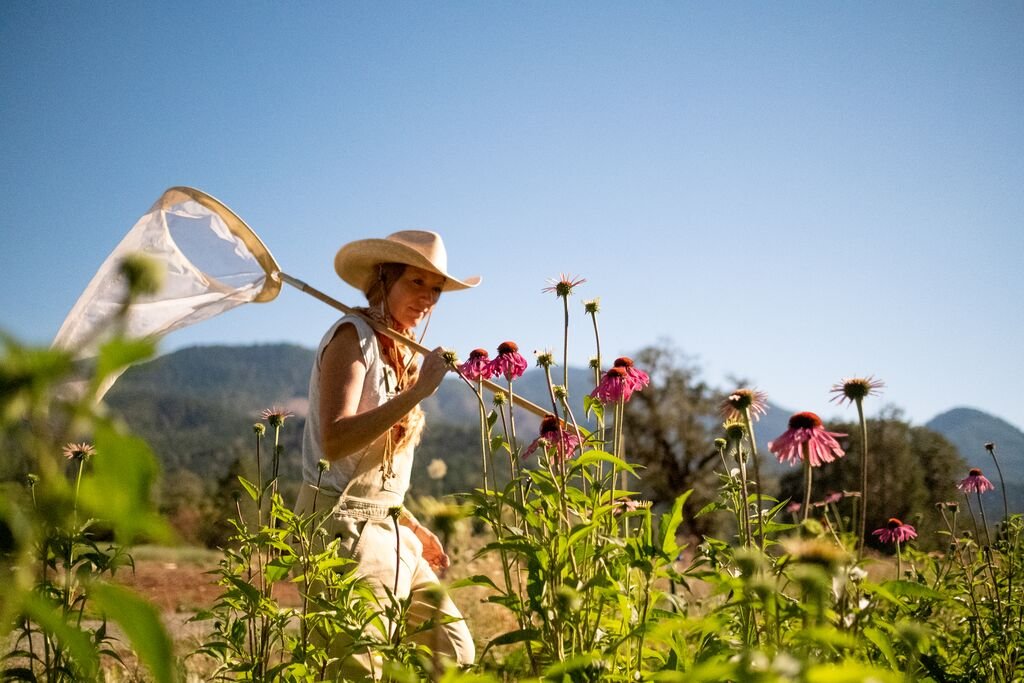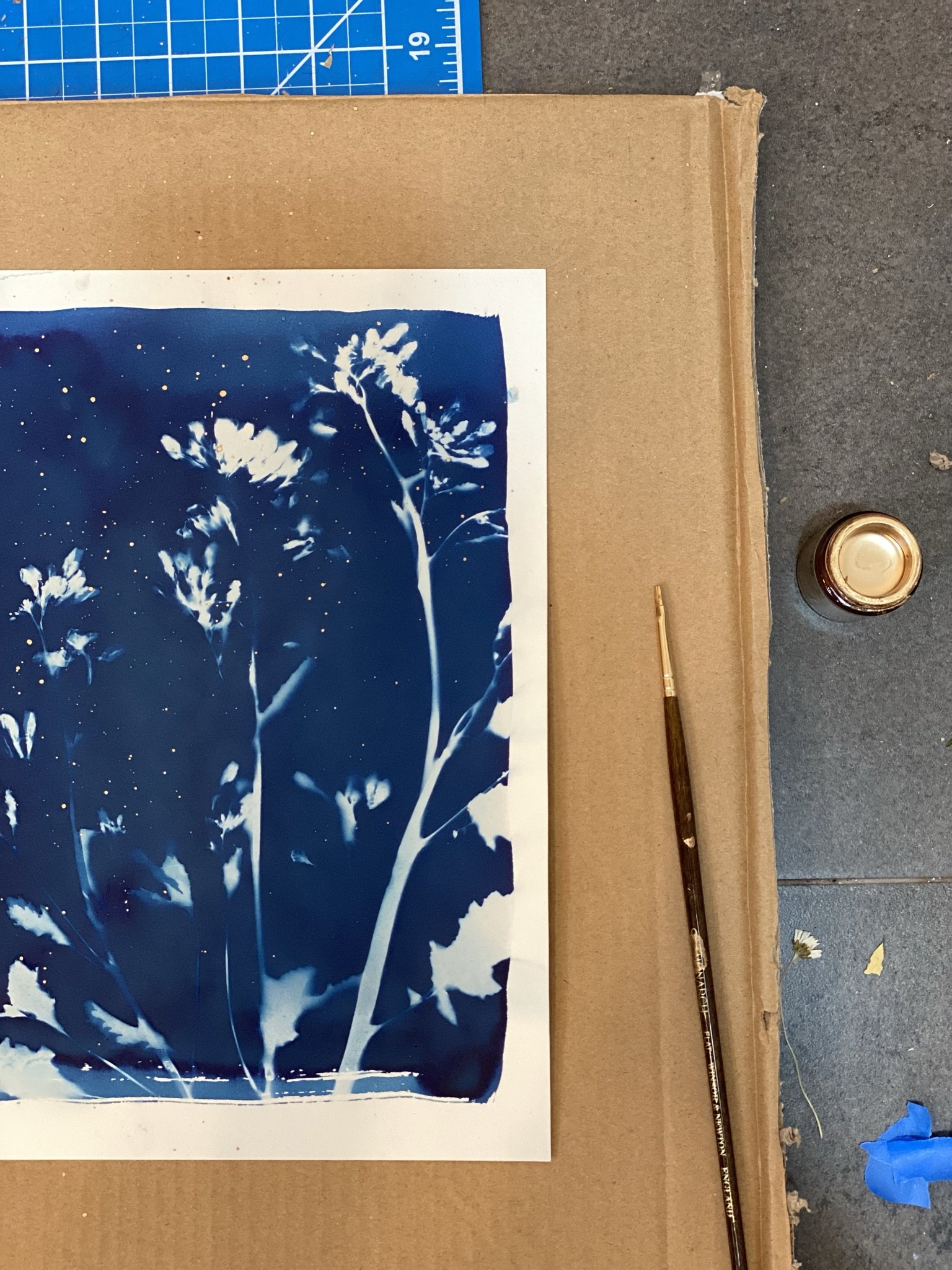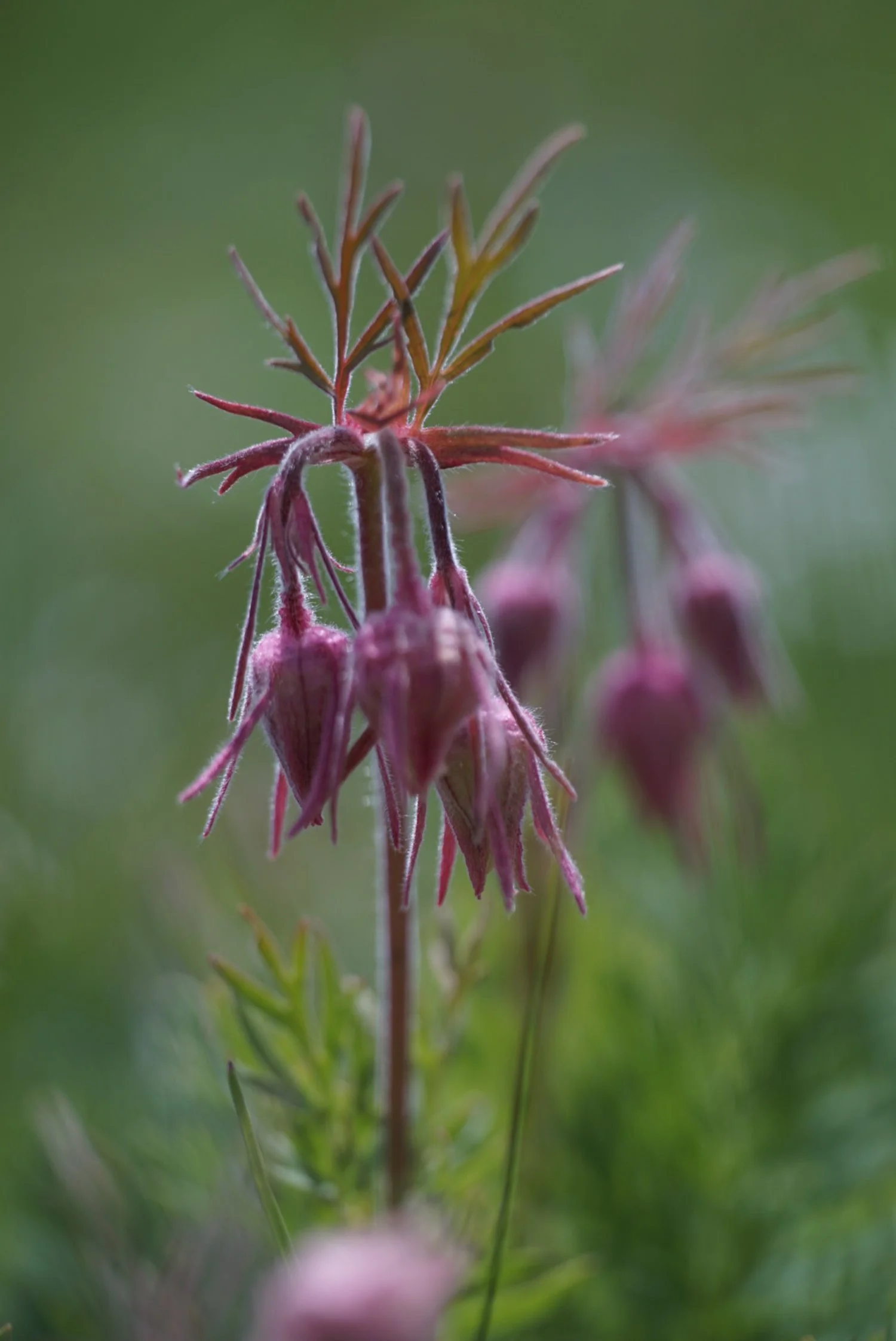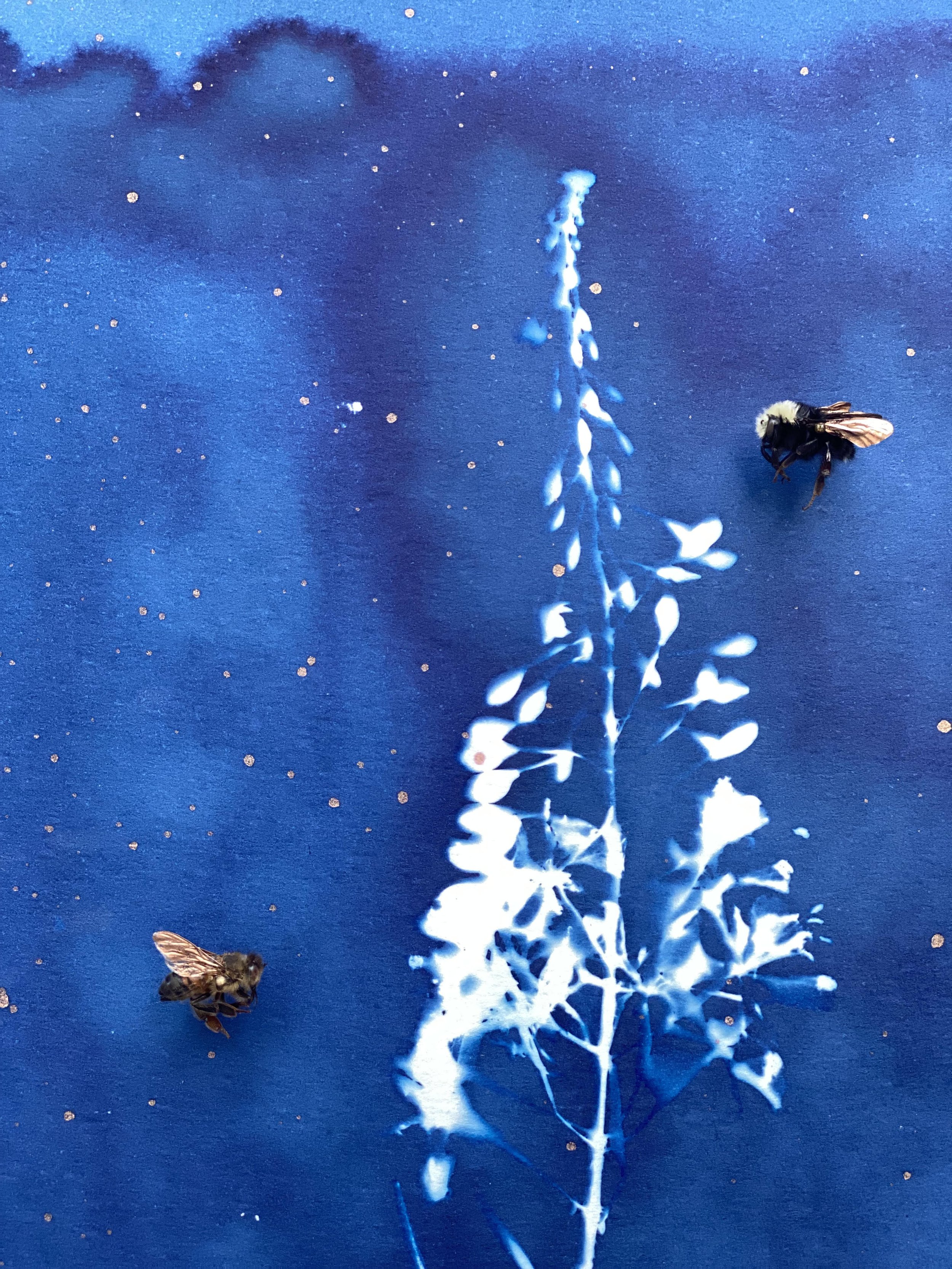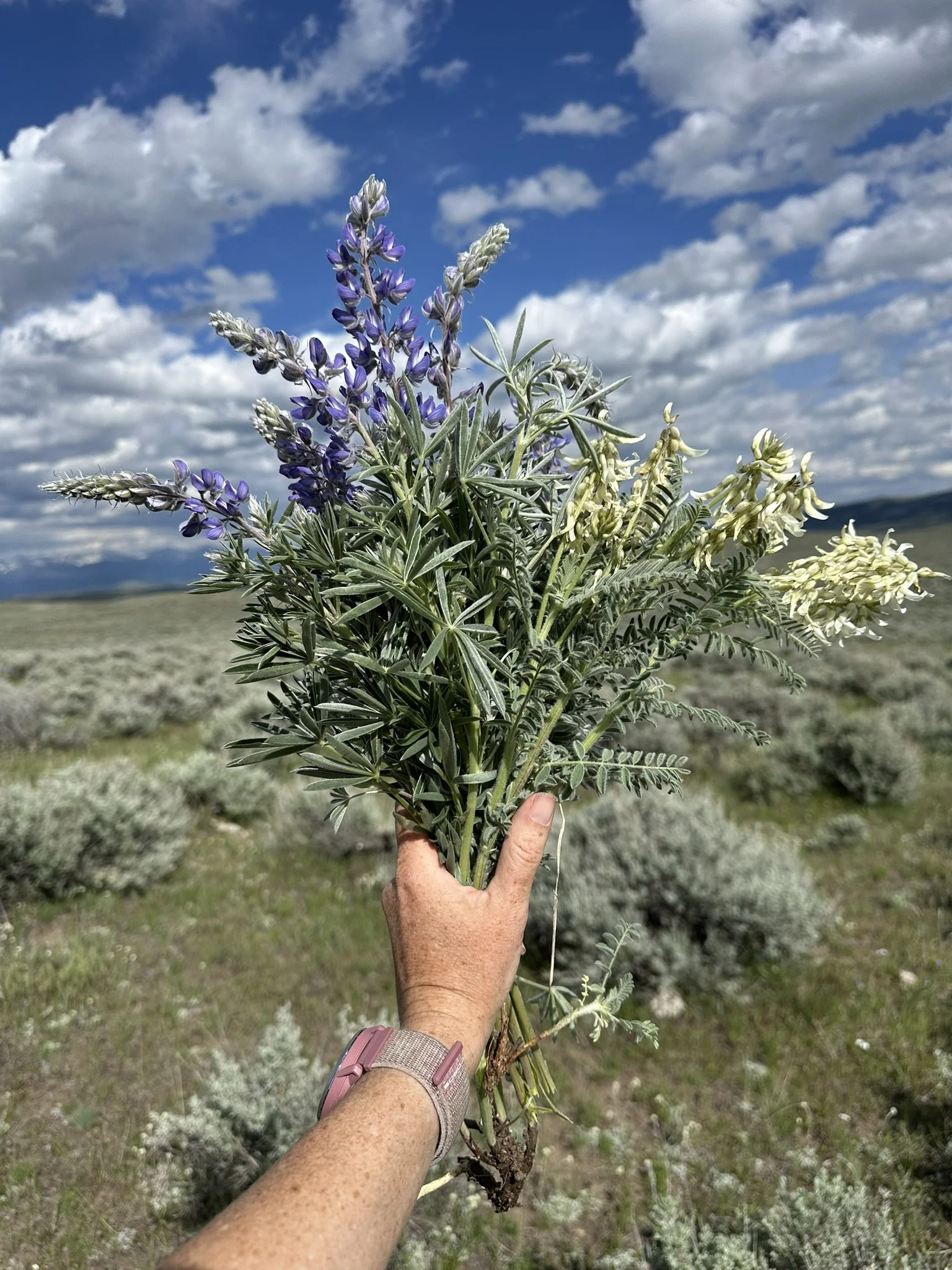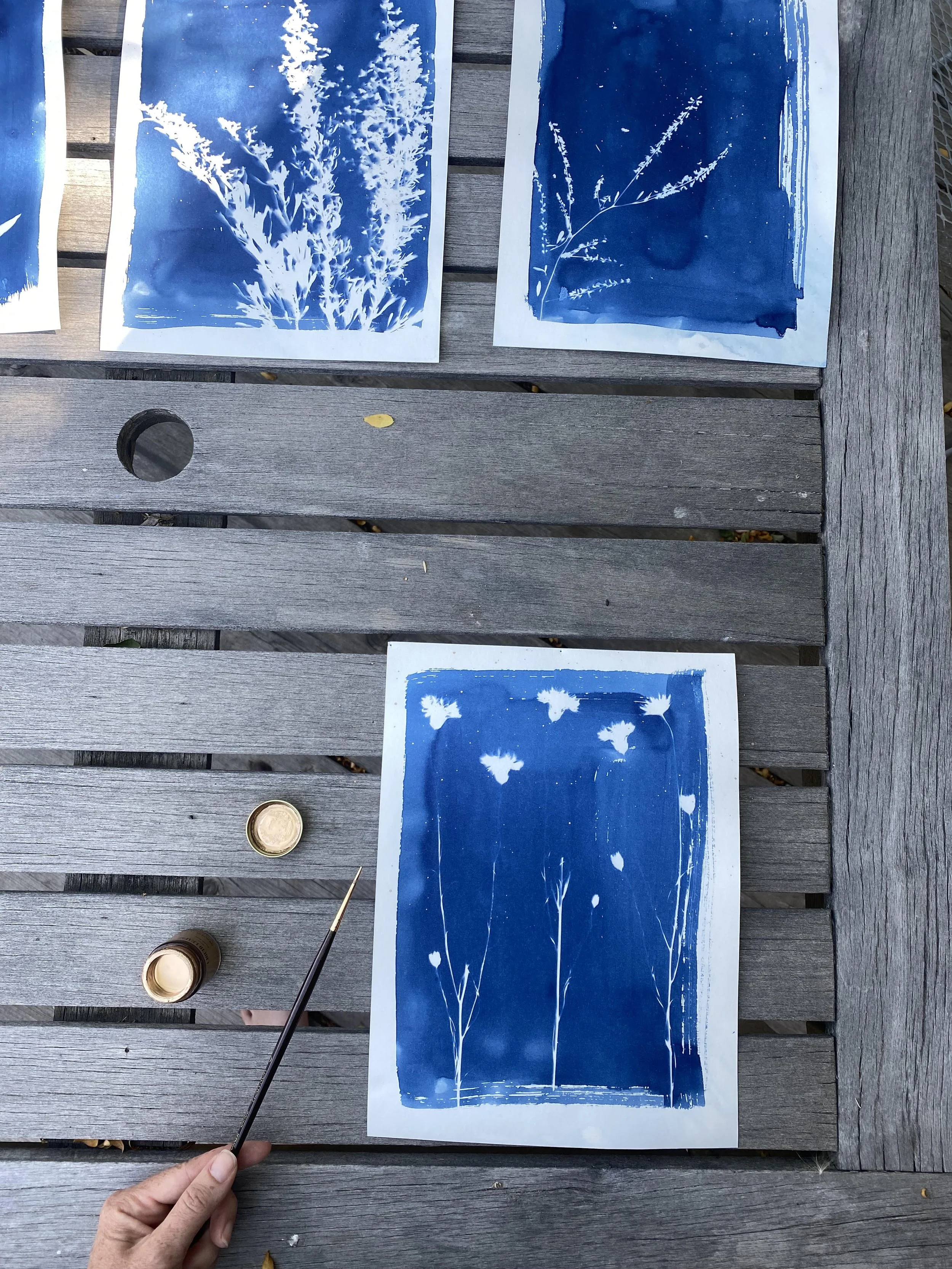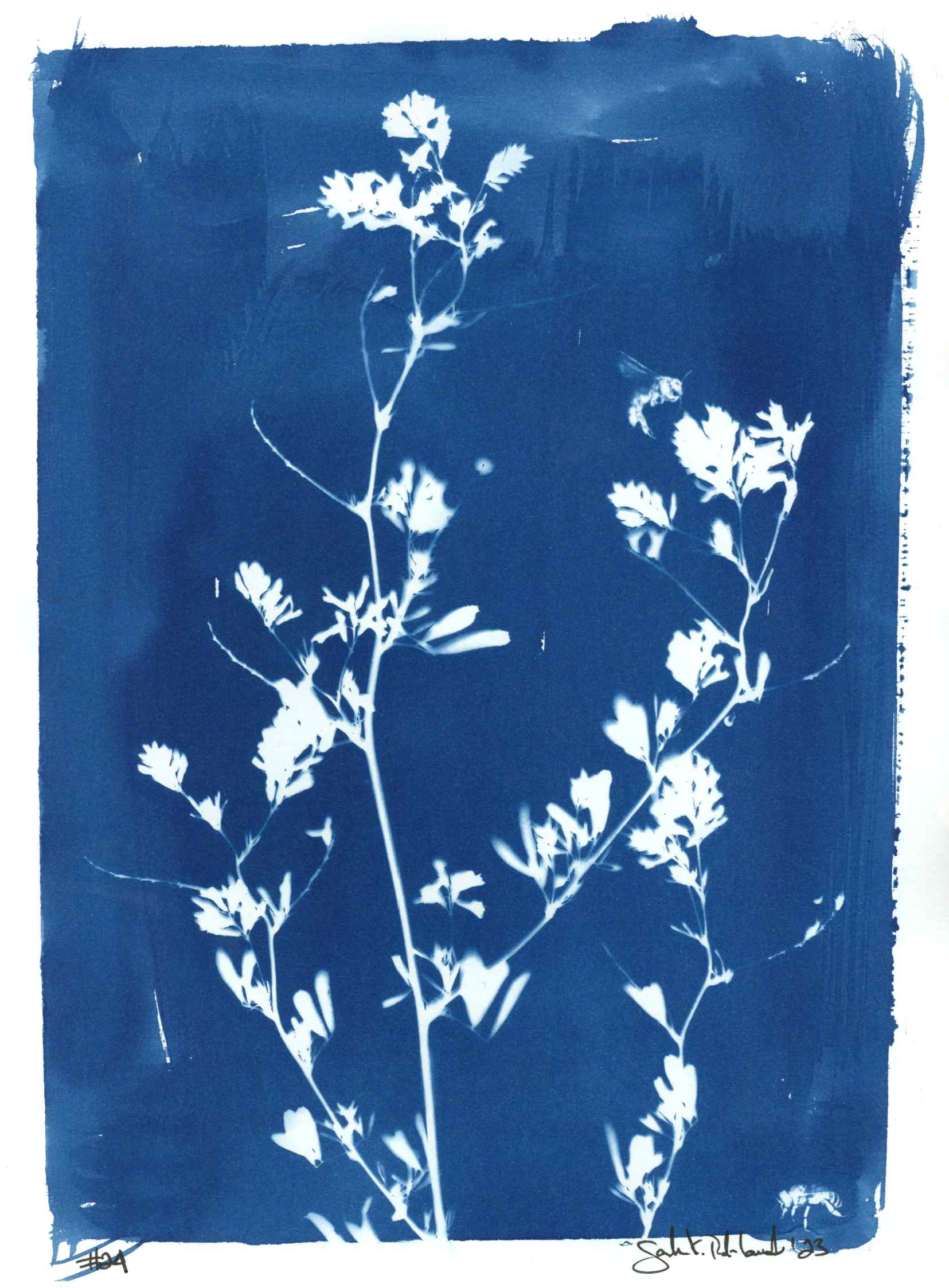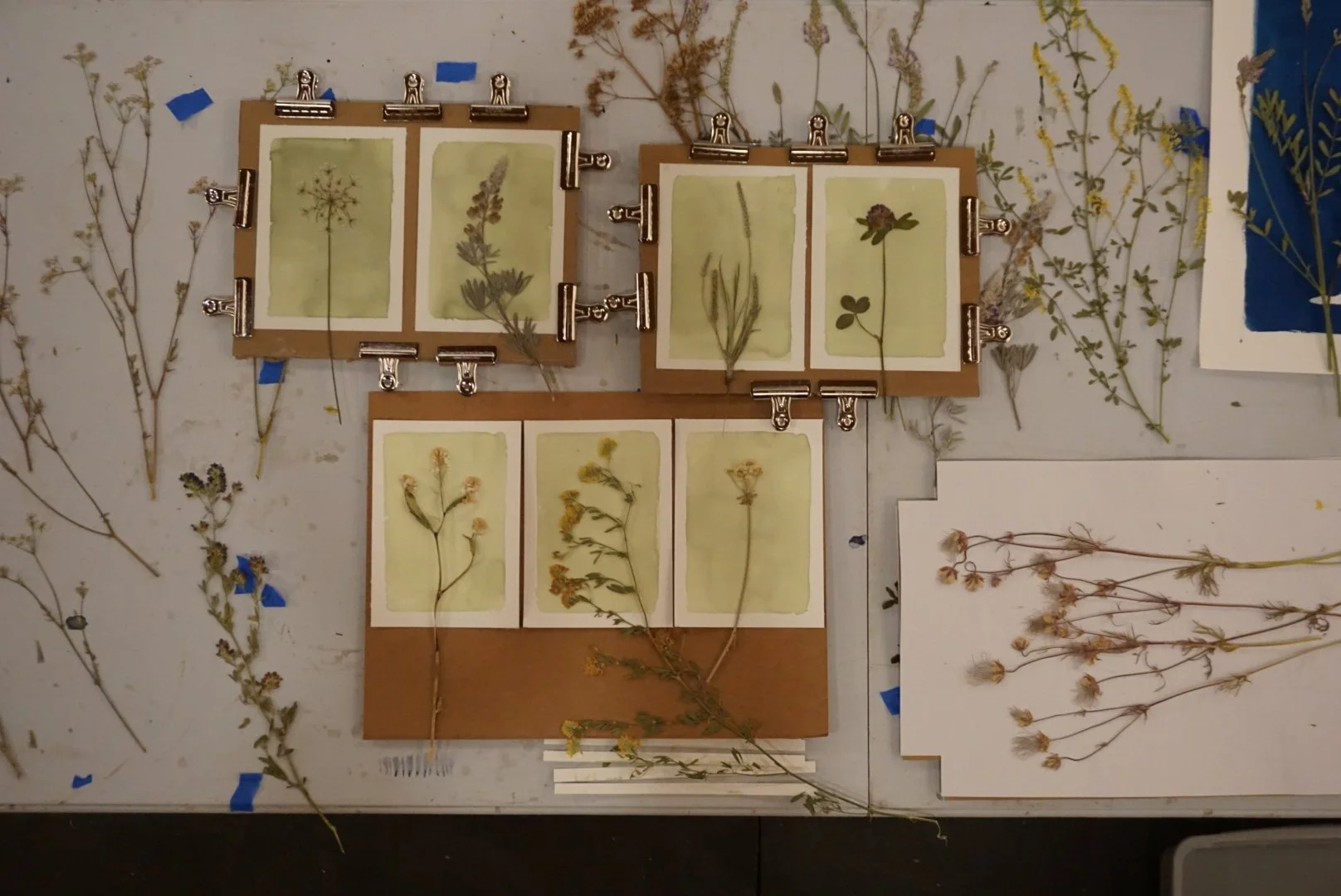Bee Habitat in Cyanotype
Artist Statement
As co-director of “Bee Regenerative,” a nonprofit with a mission to advance regenerative agriculture for pollinator conservation and climate resilience through research, education, and advocacy, I spend the field season observing, learning, and teaching on relationships between bees, flowers, soil, livestock, wildlife, and people.
Always contemplating methods to creatively bring people along with me; to understand and appreciate the value of bees and healthy flower-filled landscapes, I became I inspired to combine my love of cyanotype printing with my observations.
I thought there could be a more engaging and beautiful way to display bees from our research collections, versus the classic coffin-like display case.
I started gathering and pressing flowers from our bee habitat projects. I utilize the pressed and preserved flowers to make “cyanotypes” (photographic prints using the sun). These prints are used as the background, in a reclaimed barnwood shadow box, to highlight bees pulled from our collections, fixed to the prints.
Though bees and flower pollen are invaluable, our natural systems aren’t often seen as having value unless there is money to be made from an extractable “commodity.”
To me, a landscape dense with flowers and bees represents love, care, intention, and connection – is there anything more valuable? I embellish the bee wings with gold leaf and speckle the prints with gold “pollen” to signify beauty, value, and connection.
Each original piece is matched, via QR code on the label, to a webpage hosted on beeregenerative.org. The webpage educates the viewer on the flower, the bee, the conservation project(s) they came from, and information on how the viewer can support our work.
Click here for photos and videos on my Instagram stories of the work and process.
Click here to learn more about the creation of the pieces.
Upcoming Projects & Exhibitions
October 18 & 19th, Ashland, OR: Ashland Open Studio Tour & After Party presented by the Ashland Gallery Association, Bee Habitat in Cyanotype at Enclāve Studios! Click here for more information.
Past Projects & Exhibitions
In September of 2022 I participated in a self-directed residency at the PLAYA Summer Lake where I created 20 pieces. Bee Regenerative leased the “Gambrel Gallery” for our annual fundraiser, “Hive to Glass,” where we exhibited the art - and the entire show sold out in one night. This experience gave me the confidence to pursue art as a means to bring more support to our work and to regenerative ag.
Starting in November of 2022 there is a permanent exhibition of “Bee Habitat in Cyanotype” in the gallery at Trisaetum Winery. Visit this page to learn more about this exhibition, and this page to learn more about our Bee Friendly Vineyards project.
In the spring of 2023 I moved from a home studio to an art studio in the “Gambrel Annex,” a diverse collective of artists in Ashland, Oregon.
March, 2023: Miner's Bazaar "Attracted to Light Community Show,” Jacksonville, OR
I had the great honor of being selected as an artist and writer in residence at the Pine Meadow Center for Arts and Agriculture in Sisters, Oregon, in late summer of 2023. During my two week residency, I worked on cyanotypes, writing, and studying bees and flowers at Pine Meadow Ranch. I collaborated with Ranch Manager, Pam Wavrin, in advance to implement a 40 acre “Regenerative Bee Pasture,” to utilize during my residency (check out the results here). I gave a lecture, an open studio tour, and led a pasture walk at Pine Meadow and also visited local ranches and beekeeping operations during my residency.
July, 2023: “Bee Habitat in Cyanotype” Miner’s Bazaar solo show, Jacksonville, OR
September, 2023: “Bee Habitat in Cyanotype” exhibition at Gambrel Gallery, Ashland, OR
October, 2023: Ashland Gallery Association’s Open Studios Tour at Gambrel Annex, Ashland, OR
Spring of 2024, another studio move from Gambrel into “Enclave Studios” - located on the eclectic south side of Ashland, Enclave Studios is home to professional contemporary artists. As an artistic collective, the members of the Enclave challenge each other to push into new creative territory and continually redefine the possibilities of visual and conceptual art, producing some of the Pacific Northwest’s finest painting.
April, 2024: First Friday Art Walk “studio warming party” and pop-up exhibition at Enclāve Studios, Ashland, OR
May, 2024: First Friday Art Walk exhibition and artist’s talk at KS Wild, Ashland Oregon
June, 2024: 10 pieces were commissioned by J Bar L Ranch, one of our project partners, to display around the event centers and guest quarters of the ranch to showcase and celebrate our work together.
October, 2024: Ashland Gallery Association’s Open Studios Tour and Afterparty at Enclāve Studios, Ashland, OR
April, 2025: “Pollination: Beyond the Bloom” our spring gala fundraising event and "Bee Habitat in Cyanotype” exhibition at Enclāve Studios, Ashland, OR
May-June, 2025: “Bee Habitat in Cyanotype” Miner’s Bazaar artist talk and solo show, Jacksonville, OR
October, 2025: Ashland Gallery Association’s Open Studios Tour and Afterparty at Enclāve Studios, Ashland, OR
November 2025 - February 2026: Featured artist in the Medford Food Co-op Cafe gallery, Medford OR



